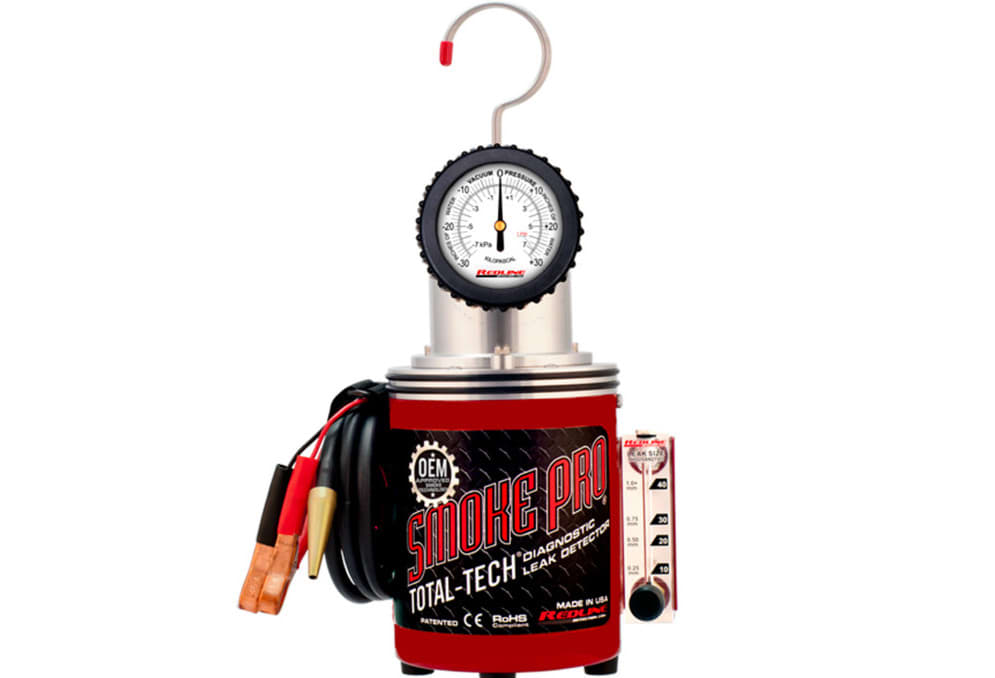

A leak anywhere removes efficiency of any closed-loop mechanical system. When these leaks occur inside the motor of today's modern cars, trucks, and SUVs, it can rob the engine of horsepower, fuel economy, and lead to mechanical component failure if not properly diagnosed and repaired soon. Most ASE certified mechanics utilize probes, complete leak down checks, and even listen to the engine with a stethoscope to try and find these leaks. However, arguably the best tool to use is a high pressure smoke machine.
What is a high pressure smoke machine?
A high pressure smoke machine is similar in many ways to an evaporative smoke machine. It is designed to find leaks that occur in multiple mechanical components that impact the operation of an engine including:
- Intake leaks
- Exhaust leaks
- Turbo charger leaks
- Charge air cooler leaks
The machines themselves use smoke, UV dye, and laser light technology to find the leaks. They are not designed to use to find evaporative emissions leaks. The machine works with shop air or nitrogen and runs on an air pressure range from 50 to 150 psi. It is powered by standard electrical outlets but can also attach to an AC power supply when the mechanic purchases the additional AC adapter.
How to properly use a high pressure smoke machine
Most ASE certified mechanics are taught to complete a "leak down" check, to find leaks inside the engine from valves, piston rings, or other compression system. The standard leak down gauge will charge an individual cylinder and the mechanic watches the gauge to determine if a leak exists. However, once this is completed, they have to complete due diligence to find the precise source of the leak; similar in many ways to completing a cold air intake leak inspection. This takes more time, costs more money and decreases shop efficiency.
However, a high pressure smoke machine removes most of the diagnostic and additional labor to find the leaks out of the question. Here is how to properly use this type of machine to determine if a leak exists and the precise source of the leak.
- Connect the tester to the vehicle battery and external power supply
- Connect the adapter to the air filter intake hose
- Select the correct display mode to test for pressure in PSI, in BAR's or Flow L/M
- The mechanic will then select a button on the tester to complete a 10 minute pressure test
As the system begins to charge and the pressure reaches a desired setting, the mechanic will observe the digital gauge for changes. If the numbers begin to drop, a leak is present in the system. If the numbers hold steady, there is no leak and the mechanic can proceed to a different component to check.
Once a leak is found, the mechanic attaches the smoke fitting to the pressure cap. This allows smoke to escape or to leave an ultraviolet trace at the source of the leak. By using the ultraviolet light or the laser light, the mechanic can easily detect what is leaking and make the appropriate repairs.
Finding an intake vacuum or boost pressure leak is much easier when you have the right tools to complete the diagnostic inspection and most certified mechanics depend on high pressure smoke machines to expedite this process.
If you're an existing ASE certified mechanic and you’re interested in working with YourMechanic to complete intake vacuum or boost pressure inspection jobs for customers in your area, submit an online application to work for YourMechanic for an opportunity to become a mobile mechanic.



